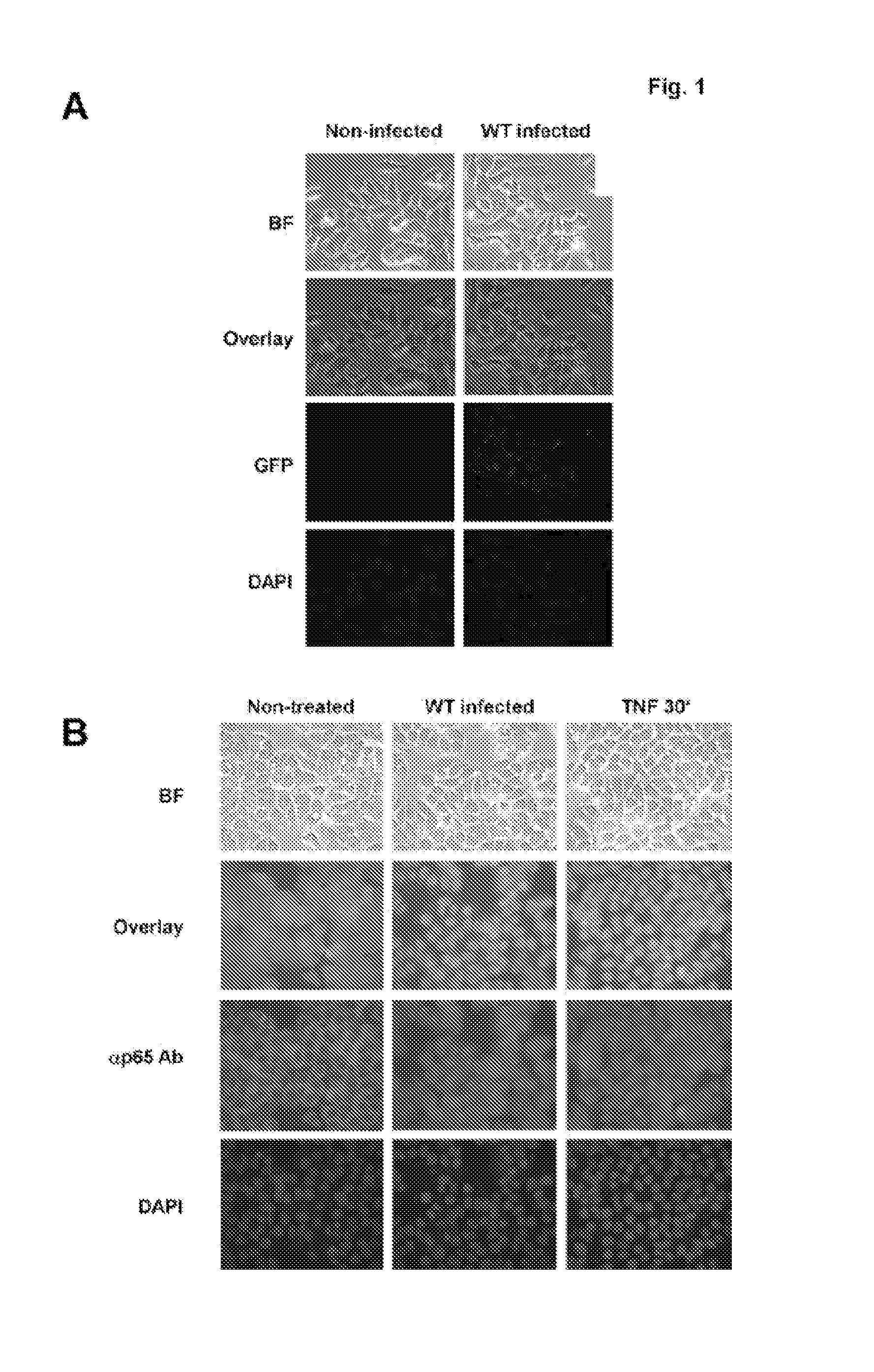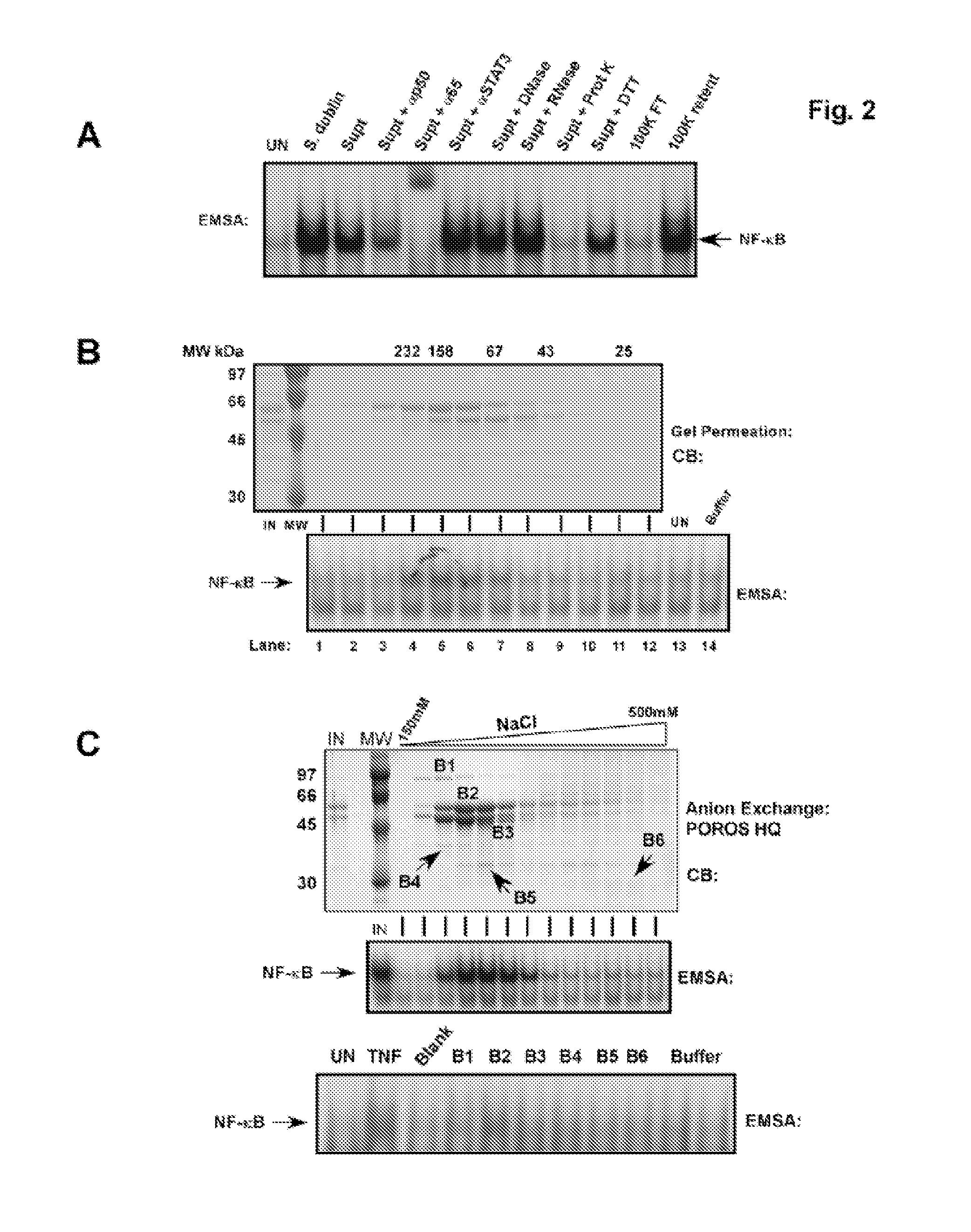Modulating apoptosis
- Summary
- Abstract
- Description
- Claims
- Application Information
AI Technical Summary
Benefits of technology
Problems solved by technology
Method used
Image
Examples
example 1
P53 Deficiency Accelerated Development of GI Syndrome in Mice
[0126] Primary cause of death from ionizing radiation (IR) of mammals depends on the radiation dose. At doses of up to 9-10 Gy, mice die 12-20 days later, primarily from lethal bone marrow depletion-hematopoietic (HP) syndrome. At this dose, irradiated mice can be rescued from lethality by bone marrow transplantation. Animals that received >15 Gy die between 7-12 days after treatment (before hematopoietic syndrome could kill them) from complications of damage to the small intestine-gastrointestinal (GI) syndrome (Gudkov & Komarova 2003). In both cases of HP and GI syndromes, lethal damage of tissues starts from massive p53 dependent apoptosis (Potten 1992, Merritt 1994, Cui et al 1995, Potten et al 1994), the observation that allowed us earlier to suggest that p53 could be a determinant of radiation-induced death. Consistently, p53-deficient mice are resistant to doses of radiation that kill through HP syndrome (Westphal ...
example 2
Salmonella Infection Activates NF-κB
[0128]Salmonella infection leads to potent IKK and NF-κB activation and activation of the proinflammatory gene program (Elewaut et al 1999). Previous studies suggest that about 30-40% of intestinal epithelial cells are infected during a typical Salmonella infection in cultured intestinal epithelial cells (Valdivia et al 1996). We wished to address the question of how bacterial infection of about 30% of the host cells could give rise to NF-κB DNA binding activity equivalent to activation of NF-κB in nearly all of the host cells as TNFα treatment does.
[0129] To examine this phenomenon in detail, HT29 cells were either mock-infected or infected at a MOI of 50 for one hour with wild-type S. typhimurium that had been transformed with the plasmid pFM10.1 that encodes green fluorescent protein (GFP) under the control of the Salmonella ssaH promoter and only functions once the bacteria has invaded the host cell (Valdivia et al. 1997). Cells that were in...
example 3
Flagellin Activates NF-κB
[0131] Since Salmonella infection of intestinal epithelial cells in culture led to only roughly 30% infection but activation of NF-κB in nearly all of the cells, we anticipated that NF-κB activation was in response to host cell recognition of bacteria structural components or products produced by the bacteria and not by the invasion process. Invasion itself has been demonstrated not to be required for activation of the proinflamatory gene program as had previously been thought (16). To investigate this possibility sterile-filtered S. dublin culture broth left either untreated or boiled for twenty minutes was used to challenge HT29 intestinal epithelial cells and NF-κB DNA binding activity was monitored by electromobility shift assays (EMSAs) of whole cell extracts (WCE) prepared forty-five minutes after exposure (3, 40). Potent activation of NF-κB in response to the broth under both conditions was observed indicating the activating factor was heat-stable.
[...
PUM
| Property | Measurement | Unit |
|---|---|---|
| Temperature | aaaaa | aaaaa |
| Exposure limit | aaaaa | aaaaa |
Abstract
Description
Claims
Application Information
 Login to View More
Login to View More - R&D
- Intellectual Property
- Life Sciences
- Materials
- Tech Scout
- Unparalleled Data Quality
- Higher Quality Content
- 60% Fewer Hallucinations
Browse by: Latest US Patents, China's latest patents, Technical Efficacy Thesaurus, Application Domain, Technology Topic, Popular Technical Reports.
© 2025 PatSnap. All rights reserved.Legal|Privacy policy|Modern Slavery Act Transparency Statement|Sitemap|About US| Contact US: help@patsnap.com



